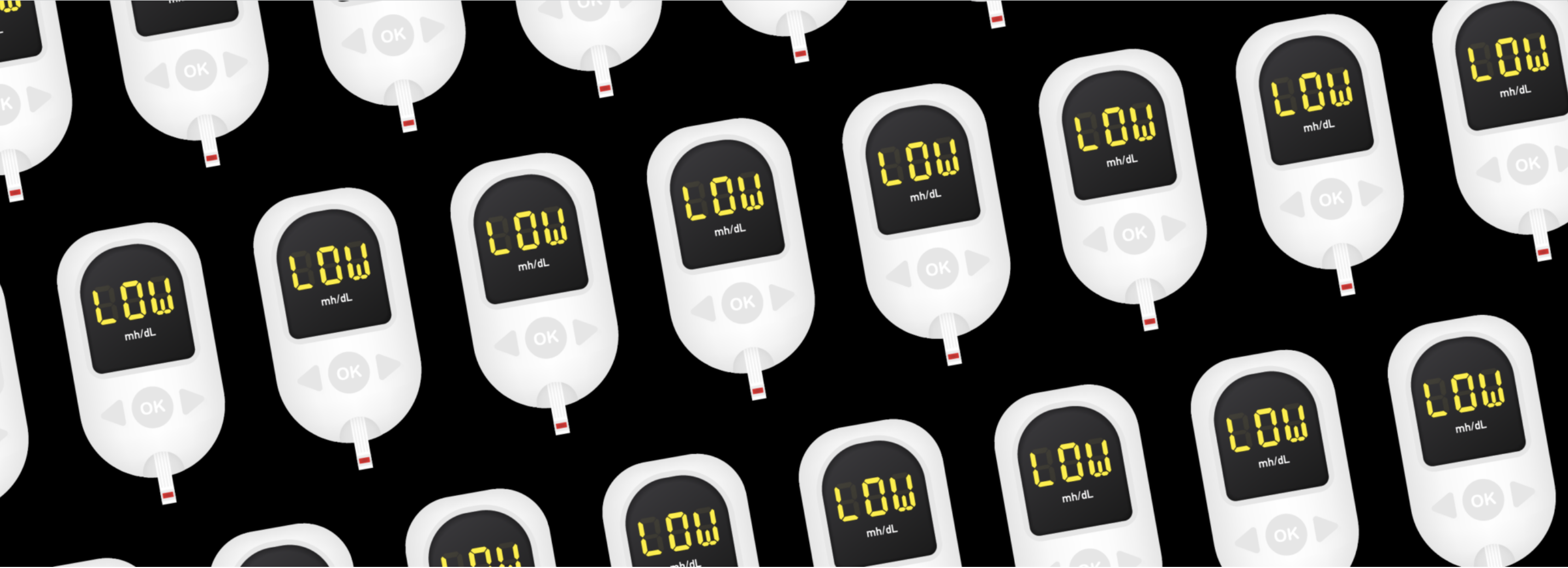The Type 2 Diabetes Guide to Bolus Insulin
Written by: T'ara Smith, MS, Nutrition Education
4 minute read
March 13, 2021
Bolus insulin can help prevent glucose spikes after meals or correct for high blood sugar. Learn more in our guide to manage T2D.
Insulin is a medication designed to help people with diabetes transfer glucose out of the blood and into the body’s cells. Due to type 2 diabetes being a progressive condition, many with type 2 diabetes may require insulin to manage the condition and reach glycemic goals in an effort to reduce the risks of diabetes-related complications. One of the types of insulin a healthcare provider may prescribe to a type 2 patient is called bolus insulin, also known as prandial insulin or mealtime insulin.
What is Bolus Insulin?
Bolus insulin is a kind of insulin usually taken before meals or to correct high blood glucose post-meals. The aim of this kind of insulin is to help prevent blood glucose spikes after meals. It can come in the form of rapid-acting or short-acting insulin such as:
- Rapid-Acting Insulin: Novolog (aspart); Humalog (lispro); Apidra (Glulisine)
- Short-Acting (Regular) Insulin: Novolin R and Humulin R
Bolus insulin differs from basal insulin, specifically rapid-acting because it starts working within 15 minutes, reaches their peak after one-to-two hours and stop working after about four-to-six hours. Basal insulin, however, is a long-acting “background” insulin that lasts up to 24 hours and mimics the pancreas’ function of releasing a steady flow of insulin throughout the day. There are other kinds of insulin you can read about in our Type 2 Guide to Insulin here. Short-acting, regular, insulin usually starts working in 30 minutes, reaches its peak two-to-four hours after injection and stops working after five-to-eight hours.
When Would a Doctor Prescribe Insulin?
According to the American Diabetes Association’s Standards of Care, healthcare providers are advised to consider prescribing basal insulin to people with type 2 diabetes when:
- There is ongoing catabolism (weight loss).
- Symptoms of hyperglycemia are present.
- When A1C levels are greater than 10 percent (86 mmol/mol).
- When blood glucose levels are very high (greater than 16.6 mmol/L300 mg/dL).
If a person with type 2 diabetes needs further assistance to manage their blood glucose levels and their A1C remains above target, a healthcare provider may prescribe bolus insulin to dose with meals or the largest meal with the greatest impact on blood glucose.
How to Take Bolus Insulin
Bolus insulin can be given via syringe, pen, inhalation, pod, pump and patch pump.
When taking bolus insulin, you will need to calculate how much to dose according to either your meal size, the number of carbs in your meal, or how much you need to correct high blood sugars. For information on how to inject insulin, specifically, check out our guide here.
With your doctor, you can determine how much insulin you need on other factors including your weight and activity levels. Your doctor may also help you determine your insulin-to-carb ratio and insulin corrective factors, which will help you figure out how much insulin to take per a certain number of carbs and how much insulin is needed to bring your blood glucose within range.
Advantages, Disadvantages and Risks of Taking Bolus Insulin
The major advantage of taking mealtime insulin is being able to prevent huge spikes in your blood sugar after eating a meal. This can give you more flexibility in your diet if you learn how much insulin to take for certain kinds of meals, different types of foods and different amounts of carbs. Overall, it can help you manage type 2 diabetes in a major way and improvement in diabetes management leads to a higher quality of life.
The disadvantages and risks of this type of insulin are that you’d have to take injections more frequently and possibly in public or social settings. Considering the stigma associated with insulin and type 2 diabetes, this can make it difficult to stick to an insulin regimen. However, it is important to remember that there is no shame in needing insulin to manage type 2 diabetes; it is necessary medication to ensure you live a healthy life. If this is an issue for you, you may want to consider wearing an insulin pump, patch, or pod therapy.
Other disadvantages include making calculations before meals or correcting for high blood sugar. However, there are bolus calculators that make this easy. Finally, the major medical risk of taking insulin is the increased risk of hypoglycemia (low blood sugar). Learn about hypoglycemia and how to prevent and treat it if it occurs.
Missed dosages can also be an issue if you’re first starting a new treatment plan. For advice on what to do if you miss a dose of insulin, please contact your healthcare provider.
Is Bolus Insulin Right for You?
To learn if this treatment is right for you, please consult your doctor. You and your doctor can create an insulin regimen or determine if there are other type 2 diabetes medications that may be more suitable for you. Prior to your next appointment, keep a journal of how your blood sugar acts, especially after meals. If you wear a continuous glucose monitor (CGM), you can download your CGM data to get an overall look at your blood glucose patterns. Use those patterns with your doctor to determine if mealtime insulin is right for you.
Key Takeaways
- Bolus insulin, rapid-acting or short-acting insulin, is used to manage blood glucose spikes that happen after meals and correct for high blood sugar. It’s also called prandial insulin and mealtime insulin.
- Rapid-acting insulin is taken 15 minutes before meals, peaks around one-to-two hours, and lasts for about four-to-six hours.
- Short-acting insulin is taken 30 minutes before meals, peaks around two-to-four hours, and lasts about five-to-eight hours.
- Bolus insulin is usually prescribed after basal insulin when patients need further help to reach their A1C goals.
- The amount of insulin to take depends on factors such as your weight, activity levels, current blood glucose levels and carbohydrates in a meal.
- The major benefit to taking mealtime insulin is being able to prevent post-meal blood glucose spikes. It can also be combined with basal insulin.
- Disadvantages of mealtime insulin include more frequent injections and the risk of hypoglycemia (low blood sugar).
- To determine if bolus insulin is right for you, please contact your doctor to form an insulin regimen that suits your needs.
Educational content related to insulin use and insulin logging methods for type 2 diabetes is made possible with support from Lilly Diabetes.

Author
T'ara Smith, MS, Nutrition Education
T’ara was diagnosed with type 2 diabetes in July 2017 at the age of 25. Since her diagnosis, she focused her academic studies and career on diabetes awareness and living a full life with it. She’s excited to have joined the Beyond Type 1 team to continue her work. Two years later, T'ara discovered she'd been misdiagnosed with type 2 and actually has latent autoimmune diabetes in adults (LADA). Outside the office, T’ara enjoys going to the movies, visiting parks with her dog, listening to BTS and cooking awesome healthy meals. T’ara holds an MS in Nutrition Education from American University.
Related Resources

The biggest barbecue day of the year is the 4th of July! Celebrating the 4th...
Read more

Hypoglycemia and severe hypoglycemia are two things against which all people with diabetes should be...
Read more

Whether or not you have type 2 diabetes, you must eat. You must also pay...
Read more

